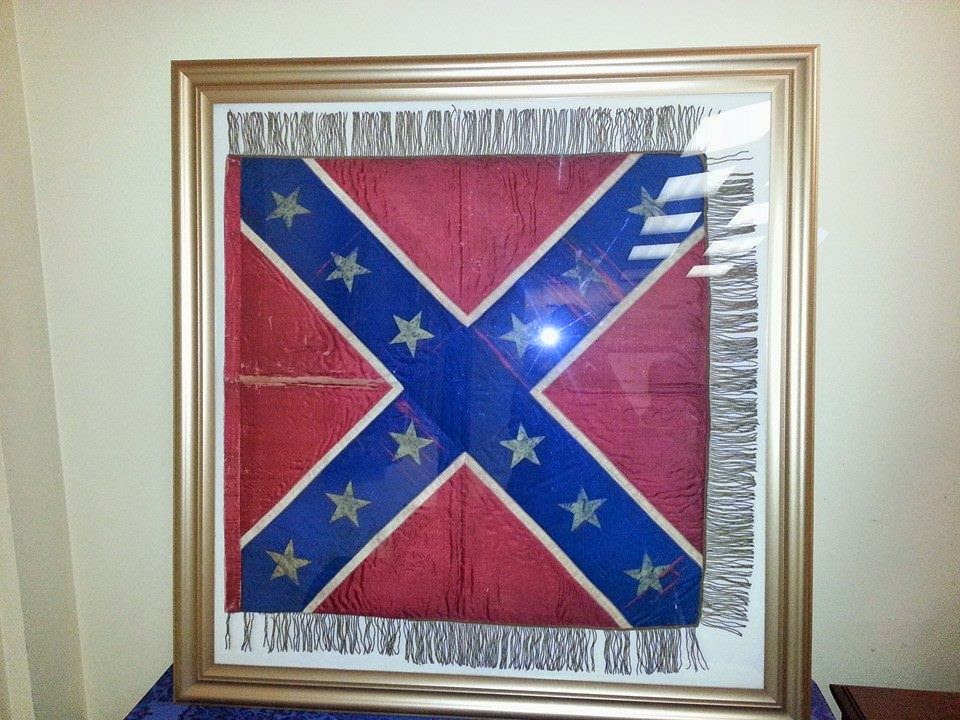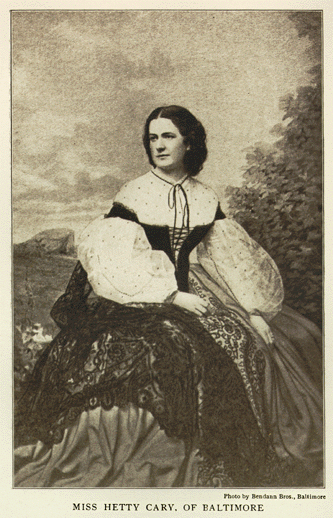
We love flag history in Baltimore. The Star-Spangled Banner that famously flew over Fort McHenry was sewn by our own Mary Pickersgill and enshrined in song by Francis Scott Key during the Battle of Baltimore. But even as Confederate flags are being pulled down at state capitols this week, there’s no whitewashing history.
Baltimore society sisters Hetty and Jennie Cary, and their Richmond cousin, Constance Cary, first sewed the Confederate flag as we know it. Hetty has been referred to as the “Betsy Ross of the South.” It’s not good.
The story, best we can sort it out, goes like this: The original national flag of the Confederate States of America—red and white stripes, blue box with circular stars in the upper left corner—bore such resemblance to the Star-Spangled Banner that it literally caused strategic confusion in the smoke and fighting at first Battle of Bull Run in the summer of 1861.
At about the same time, the prominent Cary sisters, ardent Southern abetters, fled Baltimore, which was filled with Union soldiers after the Baltimore riot of April 1861, under the threat of arrest. They joined their cousin Constance and her family in Richmond.
At the request of a Confederate congressional committee, the sisters—who had been part of “the Monument Street Girls” in Baltimore and had sewed uniforms for Marylanders fighting for the Confederacy—and cousin Constance each sewed and sent off flags to three Confederate generals.
It’s not quite clear who contributed what to the final flag that was adopted, but Hetty generally receives more credit than her younger sister and cousin. She died in 1892 and was buried at the St. Thomas Episcopal Church cemetery in Owings Mills. However, these are her Constance’s words, describing their efforts:
“The flags were jaunty squares of scarlet crossed with dark blue, edged with white, the cross bearing stars to indicate the number of the seceded states. We set our best stitches upon them, edged with golden fringes, and when they were finished, dispatched our flags to [General Joseph E.] Johnston, another to [General P. G.T.] Beauregard, and a third to [General] Earl Van Dorn.” A legend suggested that the material for these flags came from the ladies’ dresses, but that’s apparently not true.
During the Civil War, the three women became something of celebrity belles in the South, known as the “Cary Invincibles.”
Hetty, in particular, was apparently very attractive. According to an oft-repeated, but unverifiable anecdote, she waved a Confederate flag from a second-story window at Union soldiers marching in Baltimore before she’d fled to Richmond. Allegedly, an officer pointed her out to his colonel and asked if he should have her arrested. The colonel is said to have looked and replied: “No, she is beautiful enough to do as she pleases.” She’d later marry a Confederate general, only to see him die on the battlefield 18 days later.

It’s also worth noting that Hetty and Jennie Cary are credited for putting James Randall’s Confederate sympathizing poem, “Maryland, My Maryland” to music and popularizing the number, which later became—and remains, despite some controversy—the official state song.
Baltimore Mayor Stephanie Rawlings-Blake recently announced plans to change the name of Robert E. Lee Park and, Gov. Larry Hogan said he wants to recall the state’s Sons of Confederate Veterans license plates. Who knows? Maybe the state legislature will revisit the issue and change the song. Or, at least change the lyrics of an essentially Confederate call-to-arms against “the Northern scum.”
